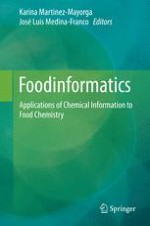2014 | OriginalPaper | Buchkapitel
6. Discovery of Natural Products that Modulate the Activity of PPARgamma: A Source for New Antidiabetics
verfasst von : Santiago Garcia-Vallve, Laura Guasch, Miquel Mulero
Erschienen in: Foodinformatics
Aktivieren Sie unsere intelligente Suche, um passende Fachinhalte oder Patente zu finden.
Wählen Sie Textabschnitte aus um mit Künstlicher Intelligenz passenden Patente zu finden. powered by
Markieren Sie Textabschnitte, um KI-gestützt weitere passende Inhalte zu finden. powered by
